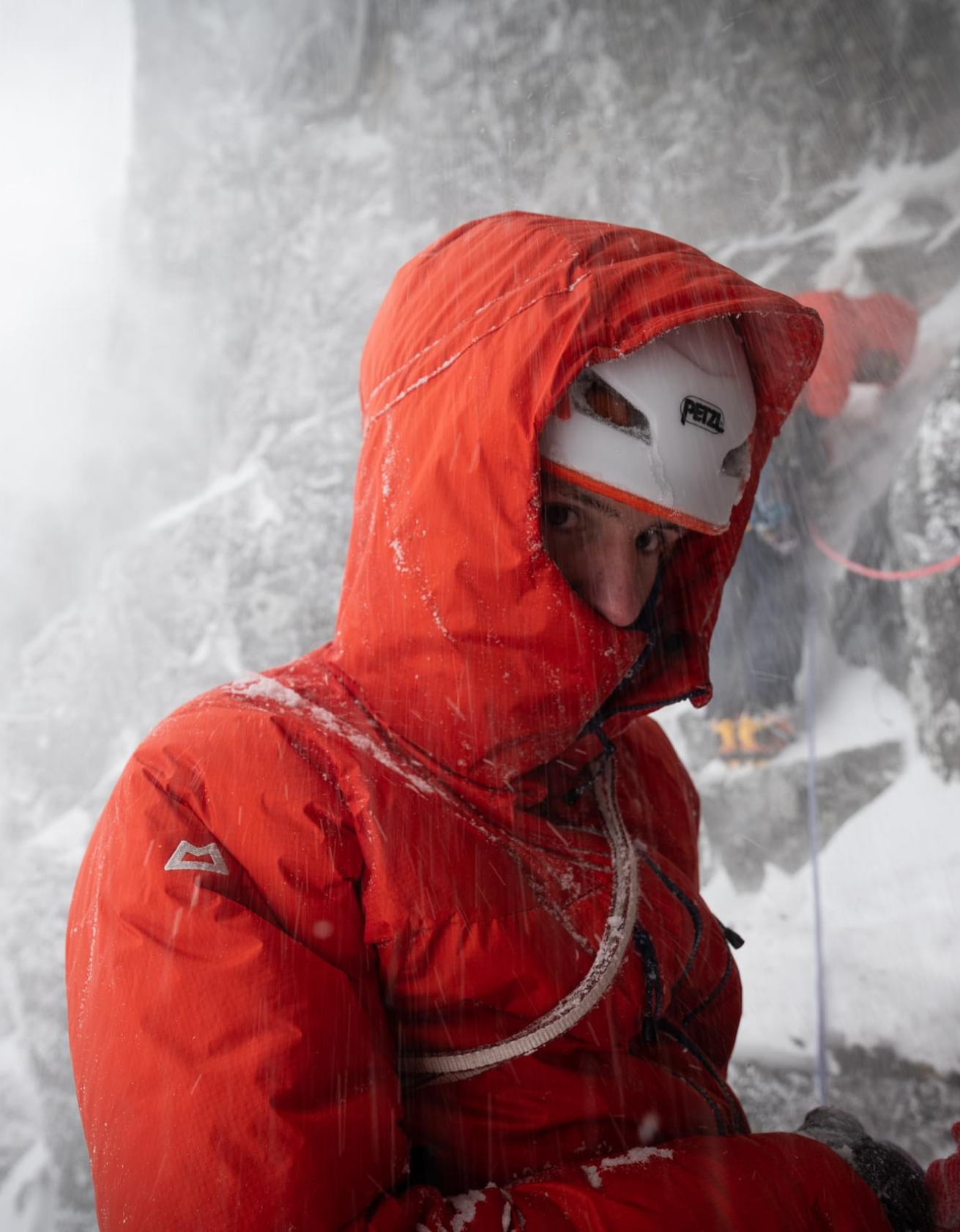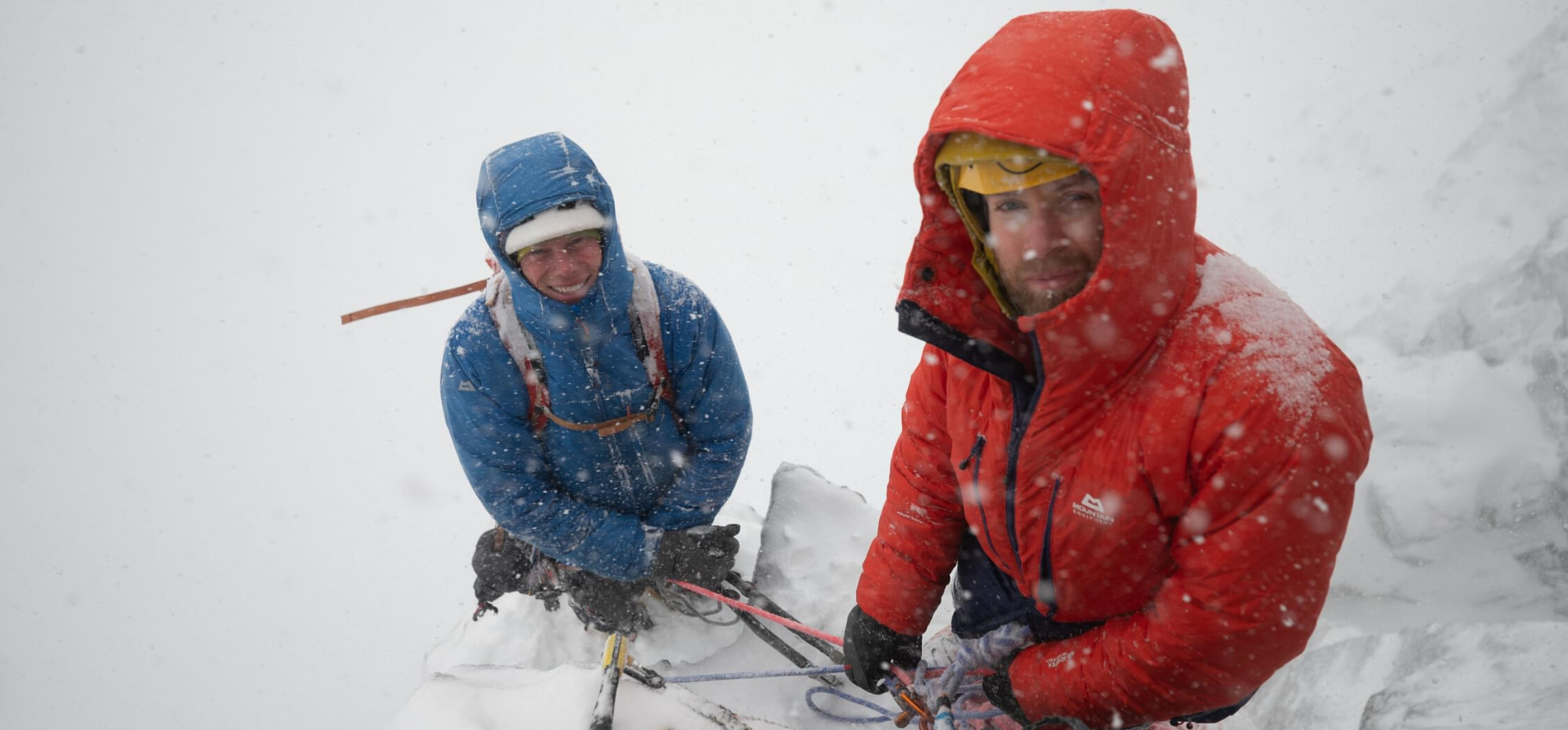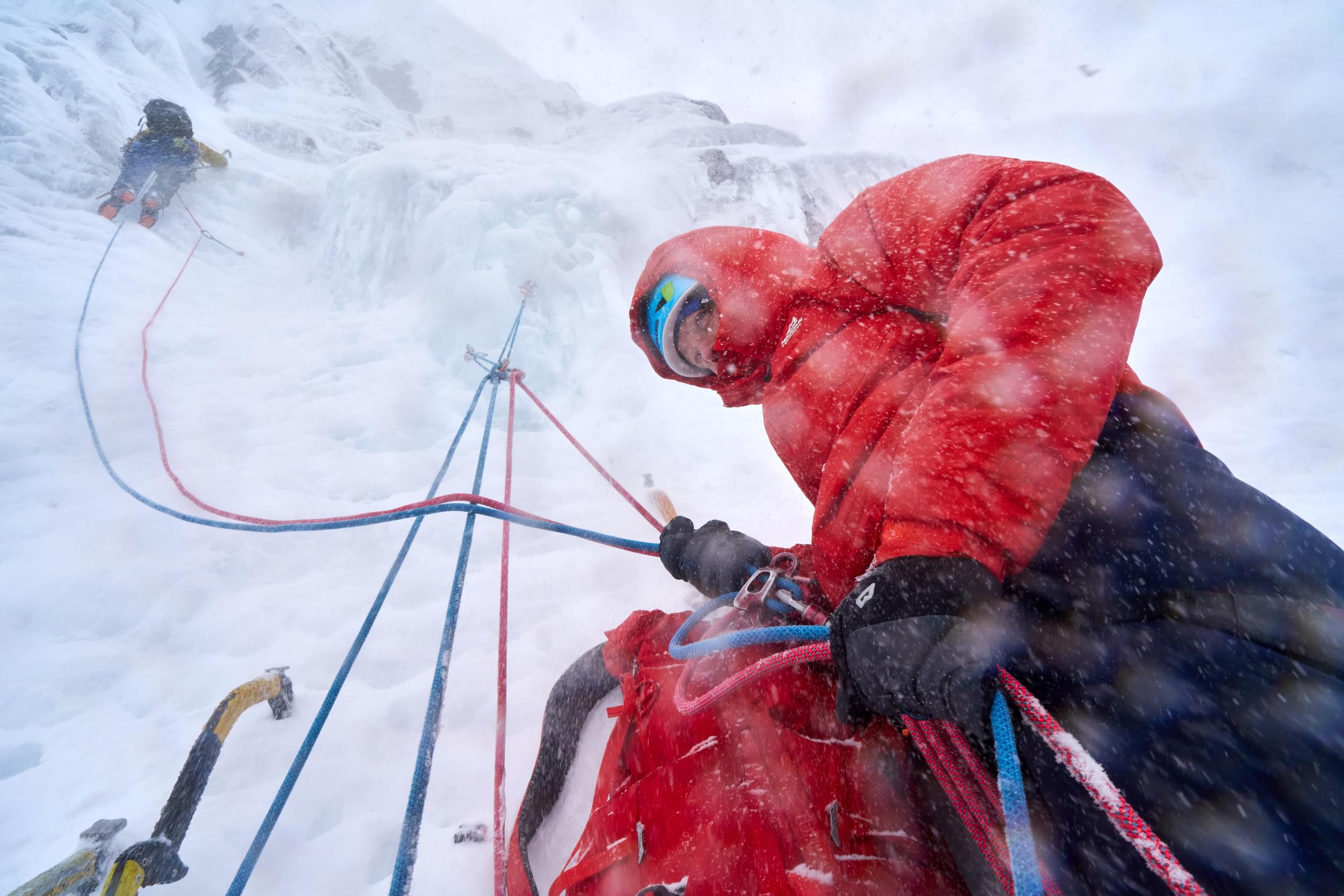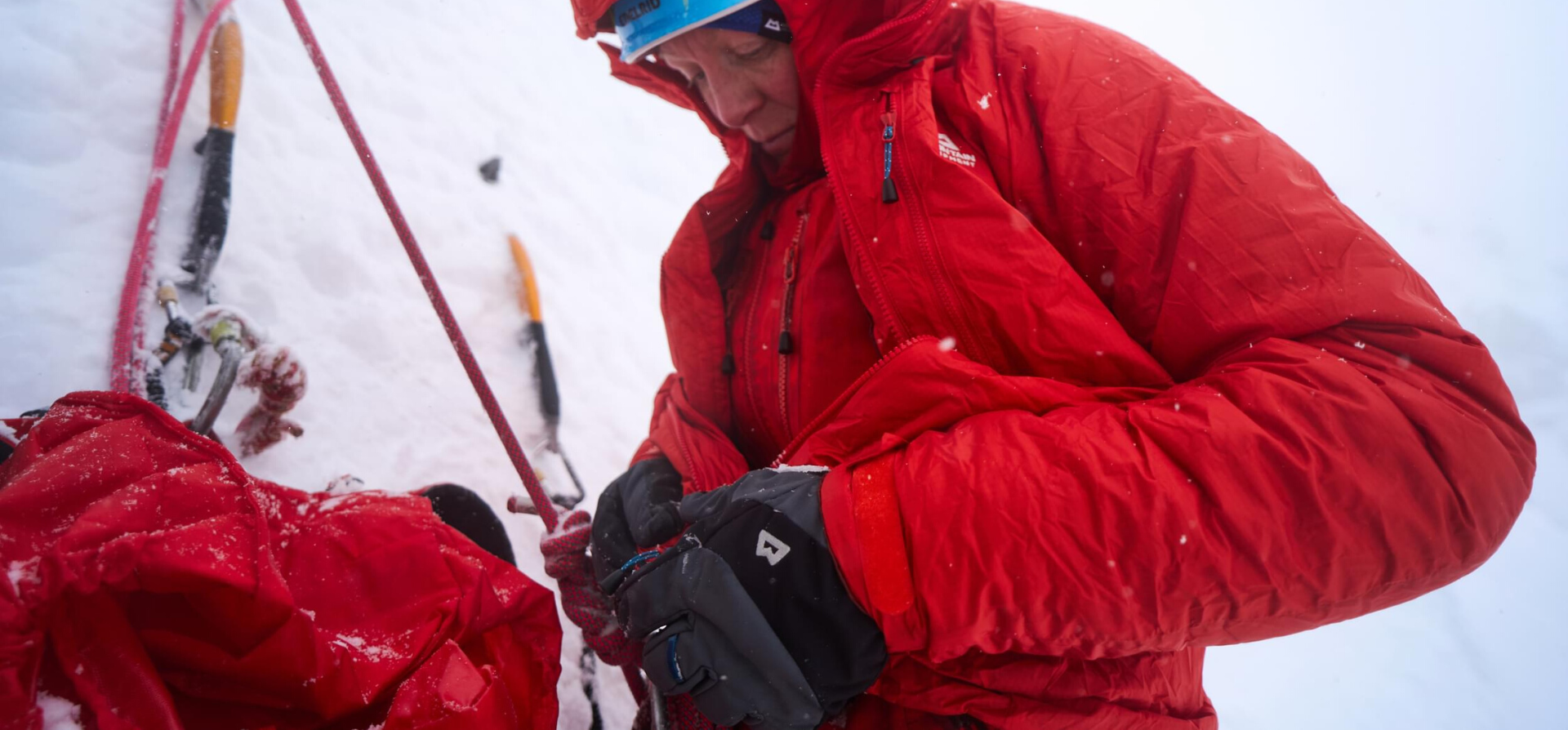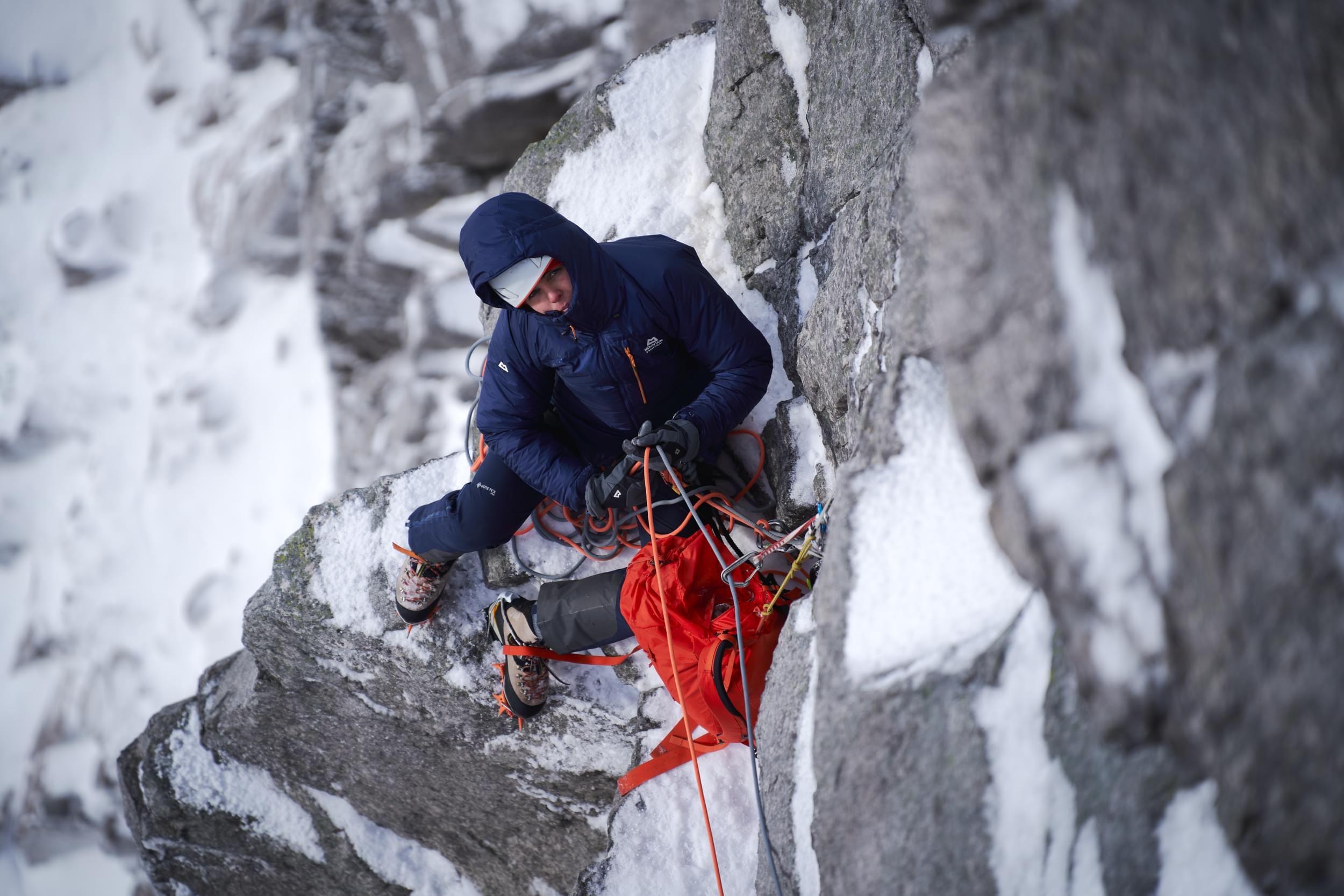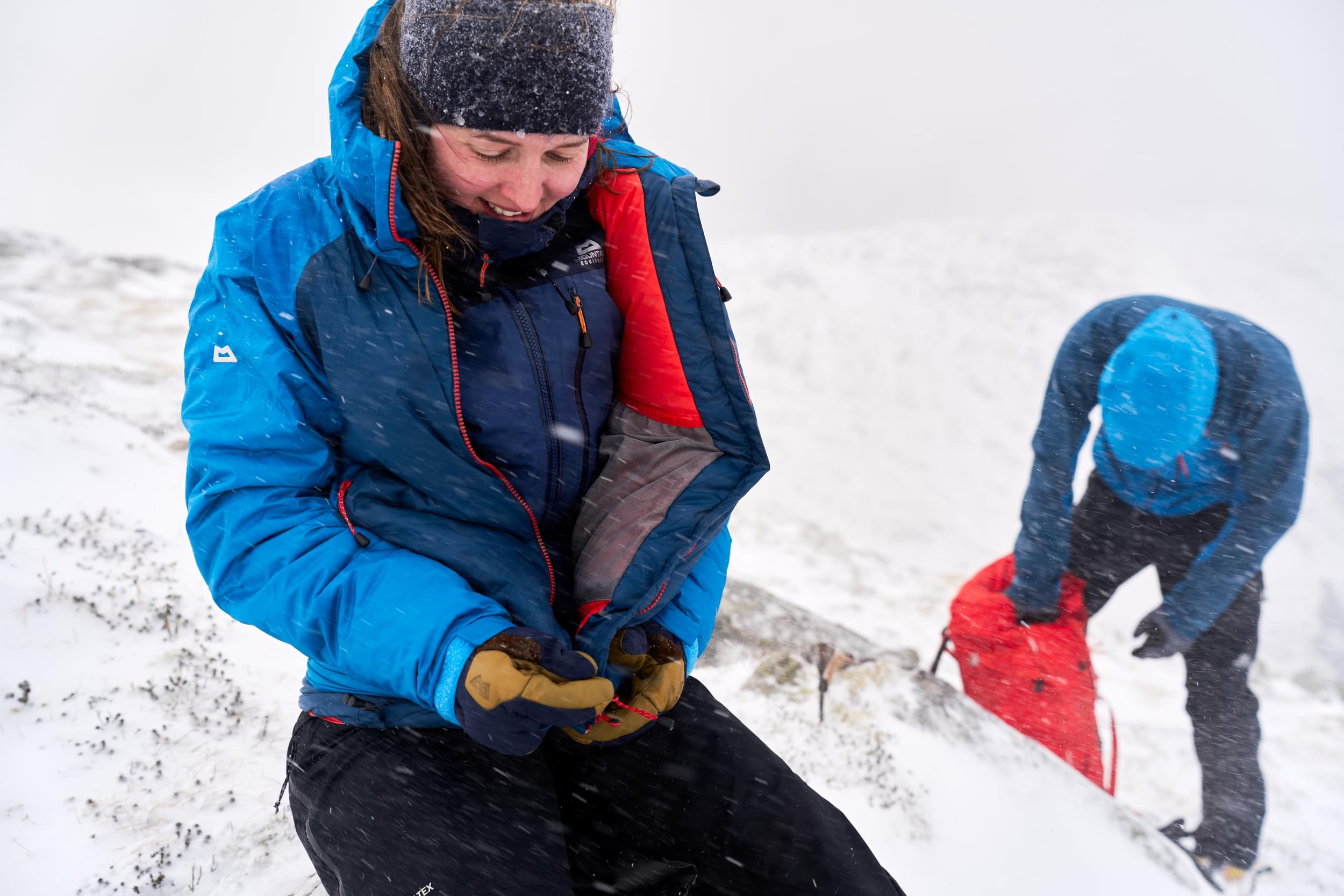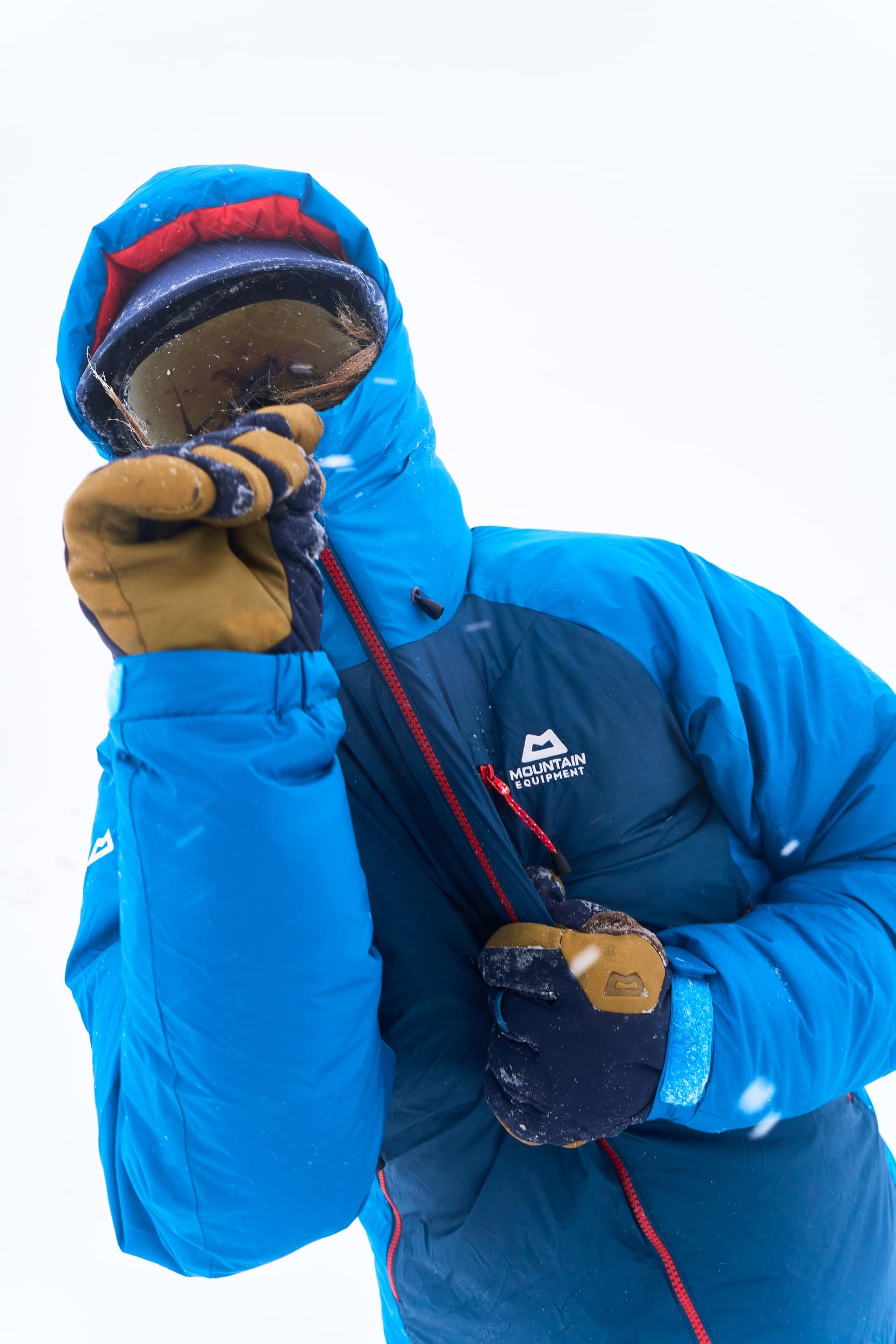Down or synthetic?
Down insulation might grab the headlines for its warmth to weight ratio, but synthetic insulation’s superior route-proof nature means it will keep working when most down stuff will have given up and gone home. Synthetic insulation is an essential part of any gear cupboard: thrown on over all your other layers as you stop for food; windmilling your arms at the belay as the snow pours down… this is where synthetics earn their keep.
In general, synthetic insulation is best for damp conditions as it stays warmer than down if it gets wet and dries out faster. However, it isn’t as compressible as down so doesn’t pack down as small and weighs more to provide a similar amount of warmth. Synthetic insulation tends to be less expensive than down, but it very gradually degrades with use so doesn’t last as long if it is worn regularly.
Types of synthetic insulation
There are two main types of synthetic insulation: loose-fill insulation and wadding sheets. Loose fill looks a bit like down and can be sewn into baffles and quilted like down. Wadding comes in big rolls and is sewn into garments like how a fabric would be. Generally, loose fill is best for comfort and softness, while wadding sheets are best for weather resistance.
-
PrimaLoft®
PrimaLoft® has been the industry’s leading synthetic insulation for over a decade. Originally developed for the US military who required an insulation that would work in any conditions and that provided the most warmth for minimal weight, it soon found its way into the outdoor industry. That PrimaLoft® was patented under the name ‘artificial down’ gives you a good idea of the high standards PrimaLoft® hold.
We use two sheet waddings from PrimaLoft®: PrimaLoft® Gold and PrimaLoft® Hi-Loft Ultra. These both have silicone treated fibres that ensure long-term water resistance. For many years PrimaLoft® Gold was the best all round synthetic insuylation available, but Hi-Loft Ultra has a unique structure that increases its warmth and comfort: it is designed to be three dimensional rather than arranged in a flat sheet and this greatly increases its thickness, drape, and its freedom of movement. -
Polarloft®
Polarloft® insulations are sourced by Mountain Equipment from many of the world’s best insulation providers. We consider literally hundreds of options before deciding on the best possible material for the intended application. There are many different factors which must be considered when choosing the right insulation. Warmth to weight ratio is one, but there is also handle, stiffness, durability, slickness, loft, recycled content and other environmental considerations, water resistance, and whether there are any restrictions on construction. We’ve cut the middleman out and incorporated only the best possible options into our Polarloft® insulations.
-
Polarloft® Featherless
Most of our Polarloft® insulations are, like Primaloft® Gold, sheet waddings, but Polarloft® Featherless is blown into baffles in a garment in the same way that down garments are filled. Featherless offers far greater loft and comfort than sheet insulations and moves much better with the body, making it more wearable and adaptable.
-
Polartec® Alpha®
Polartec® Alpha® is different to other synthetic insulations in that it prioritises breathability and comfort over warmth. As a result it is best used in active midlayers rather than in a spare jacket that you primarily wear to keep warm.
Layering for Scottish Winter
Layering clothing for Scottish winter climbing is really difficult. Very changeable weather and stop/start activities like climbing and belaying mean that clothing has a really hard job to keep you warm and comfortable. Also, the worst weather is often found a long way from the safety and respite of the car or civilisation: this isn’t the Alps where a hut or lift might be just round the corner.
The damp weather of Scotland is worth particular consideration, and so down jackets are generally not recommended as belay jackets, and you are usually better off with a synthetic jacket.
Raw numbers
The best quick way to work out how warm a synthetic jacket will be is by looking at its thickness: a thicker jacket will be warmer. If you’re browsing online then the weight of insulation inside the product is usually the best way to tell: higher numbers generally mean a warmer product. For loose-fill insulation, weights are given for the overall weight of insulation in the garment. For wadded sheets, weights are given for the insulation in grams per square metre.
Features
It’s easy to get drawn into obsessing about the type of insulation in your jacket, but if the hood doesn’t fit, the cuffs don’t work, or you don’t like the pockets then the insulation is irrelevant. We wear clothes, not sheets of insulation, so make sure the jacket itself will work for you. Do you need the hood to fit over a helmet? Do you need water resistant fabrics? Do you want lots of pockets or only a couple? Does weight matter to you or do you just want the most durable jacket available?
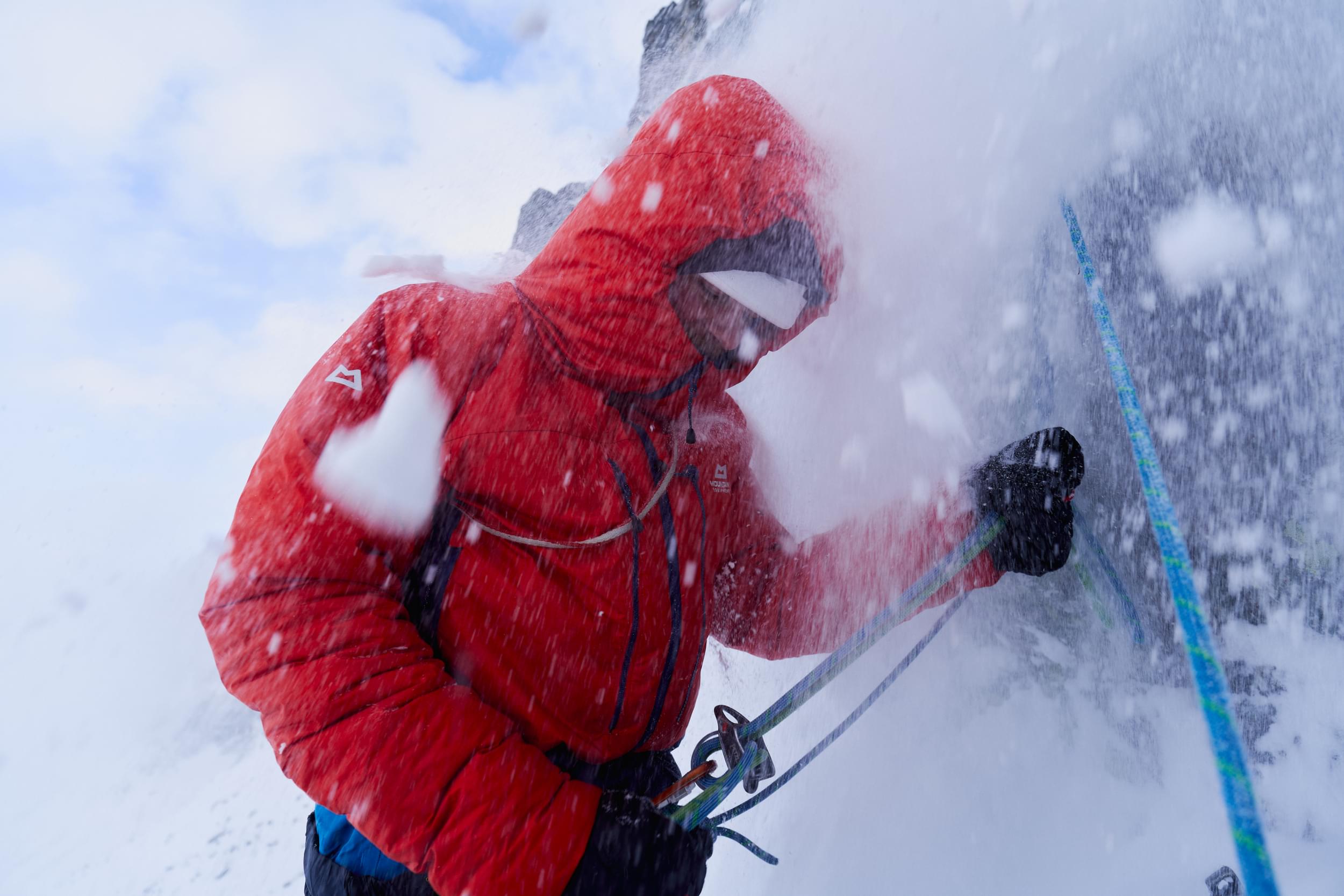
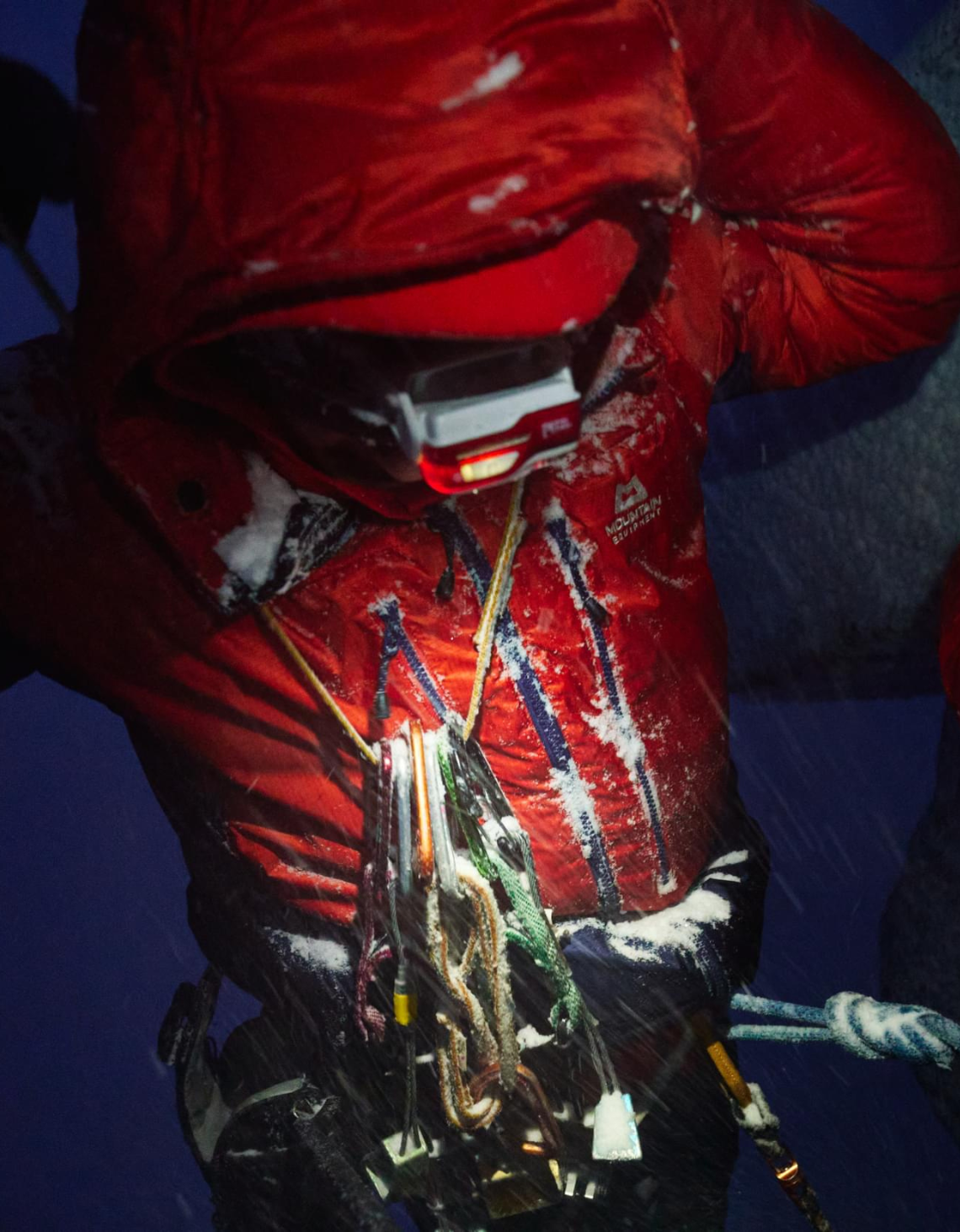
Environmental Impact
Because synthetic garments don’t usually need washing very often their biggest environmental impact is in their production phase. While synthetic insulation is increasingly made from post-consumer waste (mostly from recycled plastic bottles) and this offers many benefits, a lot of energy is used to produce it and other recycled materials, and so this is not a magic solution to our planet’s problems. The best way to reduce the environmental impact of your synthetic jacket is to not buy a new one unless you really need it, to buy the best you can, to look after it, and to repair it and keep using it until it is completely worn out, before disposing of it responsibly. For more information, please see our care pages.
What temperatures can I use synthetic jackets in?
Temperature ratings on sleeping bags are confusing enough, and so we don’t give temperature ratings to our jackets: they would differ too much from person to person and because it would depend on how you use the garment. Consider what other layers you will have with you and think of your clothing as a system, rather than as individual pieces.
Is a synthetic jacket a good layer to wear under a waterproof jacket?
It depends. Garments made with Polartec® Alpha® like our Switch family are ideal for this and other lightweight synthetic jackets can be very effective, but they might be too warm in mild conditions. Warmer jackets like our Fitzroy, Alpamayo and Citadel products are usually better off used over the top of any waterproof clothing as then they can be put on and removed whenever you get cold without having to take off your waterproof clothing.
Which jacket is best as an insulated layer while backpacking or thru-hiking?
Most of our synthetic jackets are ideal for this sort of use. A Fitzroy or Alpamayo is a perfect spare layer in inclement conditions, and our Superflux range is very warm for its weight while being very comfortable and reassuring to wear round camp.
Which is the best synthetic jacket for winter climbing?
Our Citadel jacket rewrote the rule book on how warm a synthetic jacket could be and is still the benchmark specialist belay jacket. The Fitzroy and women’s Alpamayo jackets are also exceptional belay jackets. While they are not quite as warm as a Citadel they pack away smaller, weigh less, and are warmer and more weatherproof than most other comparable options. If using a Citadel, some parties will share the jacket between them, swapping it over at belays.
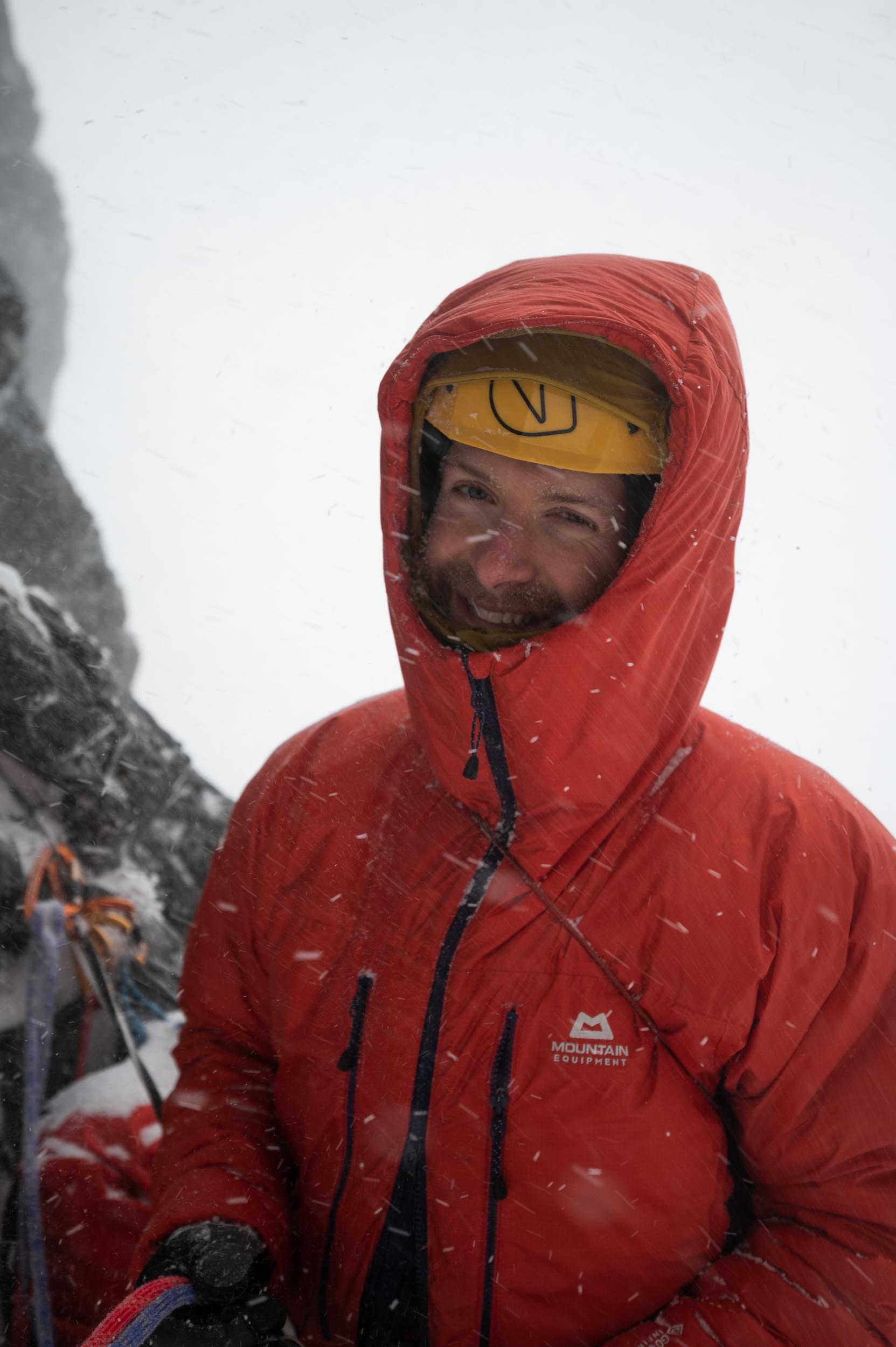
The Development of the Fitzroy, Alpamayo and Citadel
When redeveloping staple products it’s easy to worry about what you might get wrong. We’ve had so much positive feedback about both the Fitzroy and Citadel that it’s easy to rerelease the product but change very little – maybe change the zip, the colour, change the lining fabric. But we wanted to completely revolutionise the world of full-on synthetic jackets...
We started work on the project back in 2018, making a prototype Citadel. We had a brand-new construction method, new materials, and we had a jacket out testing in Scotland for the whole winter season...
